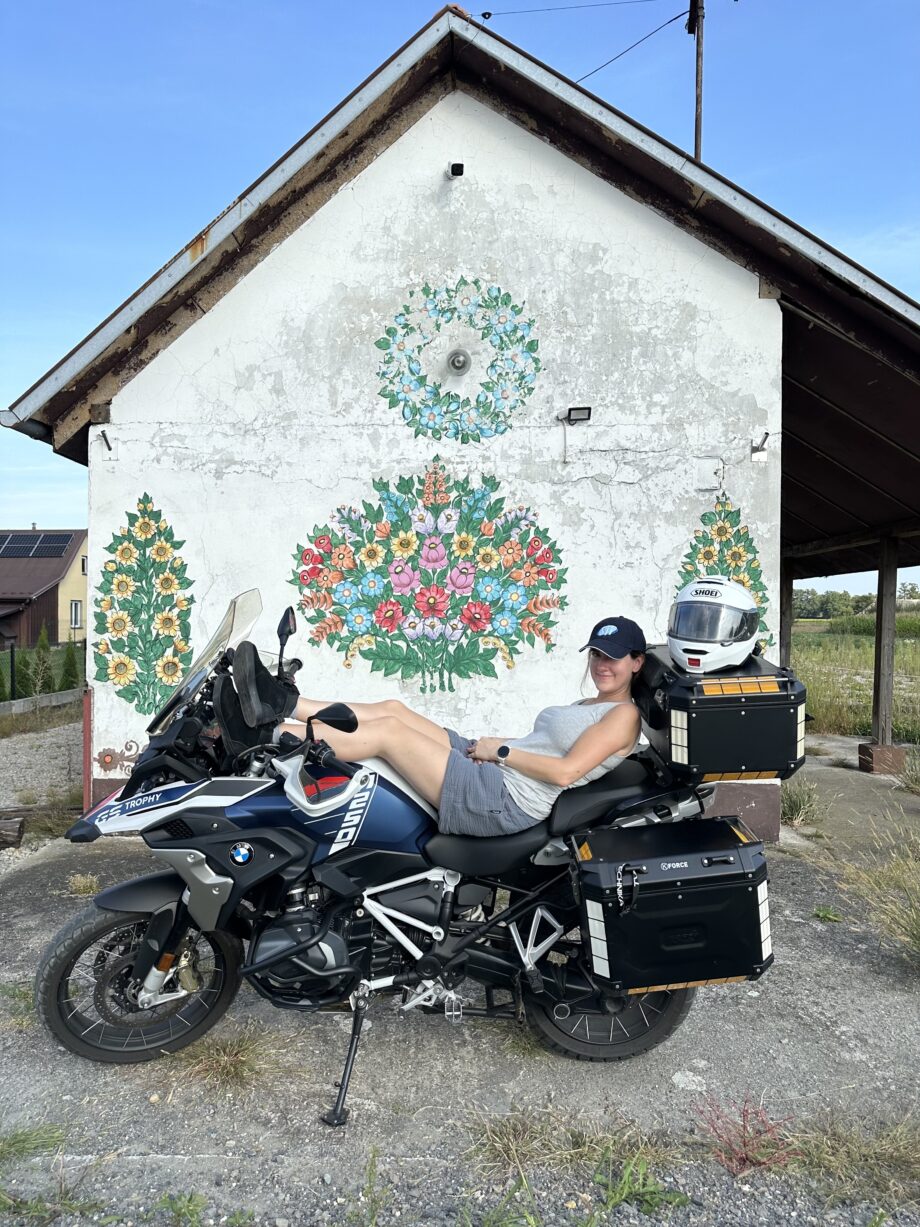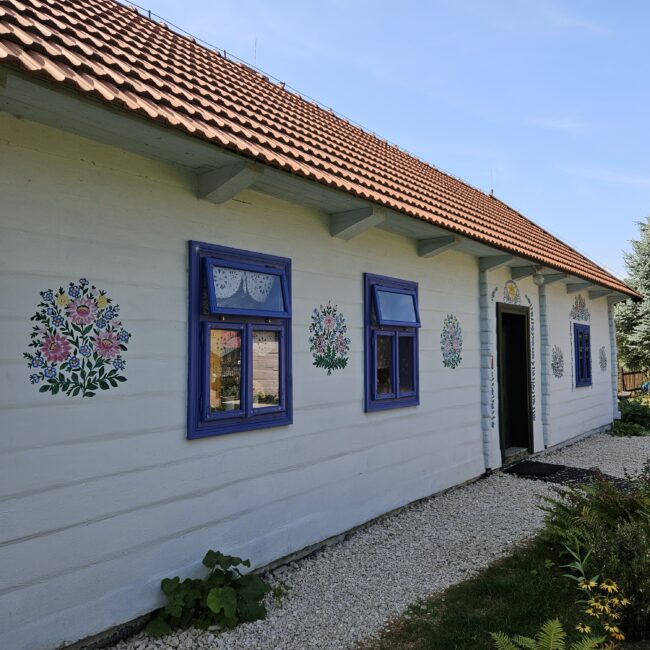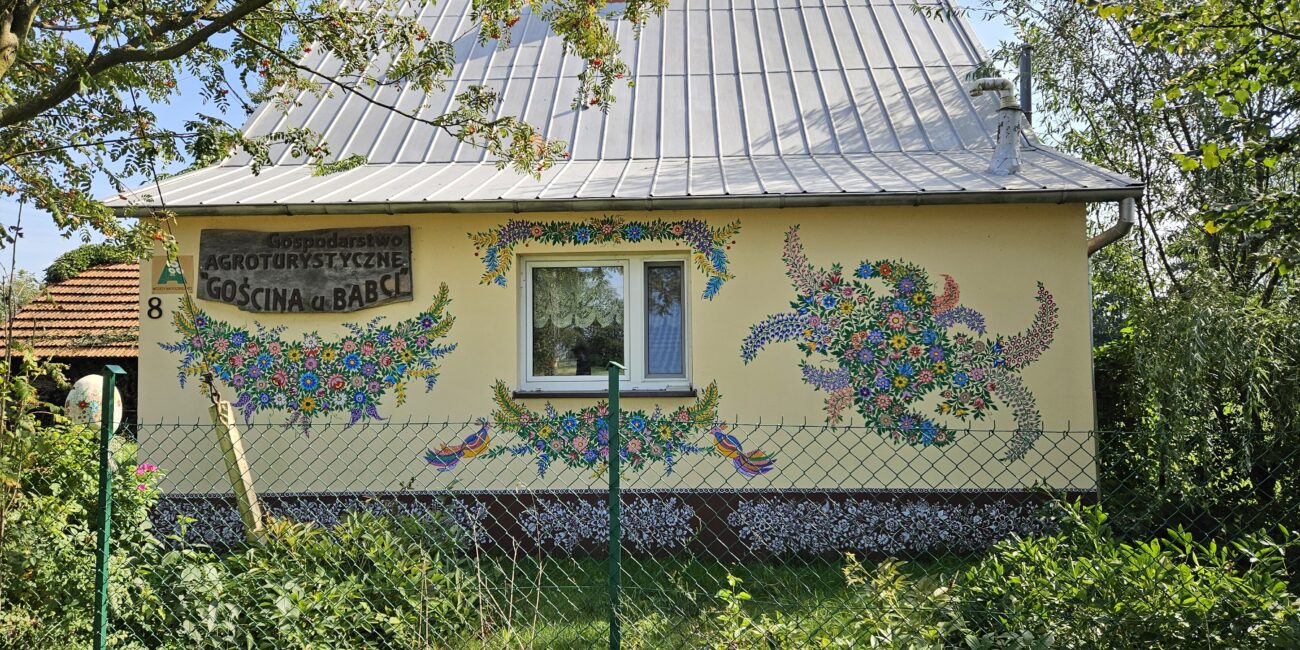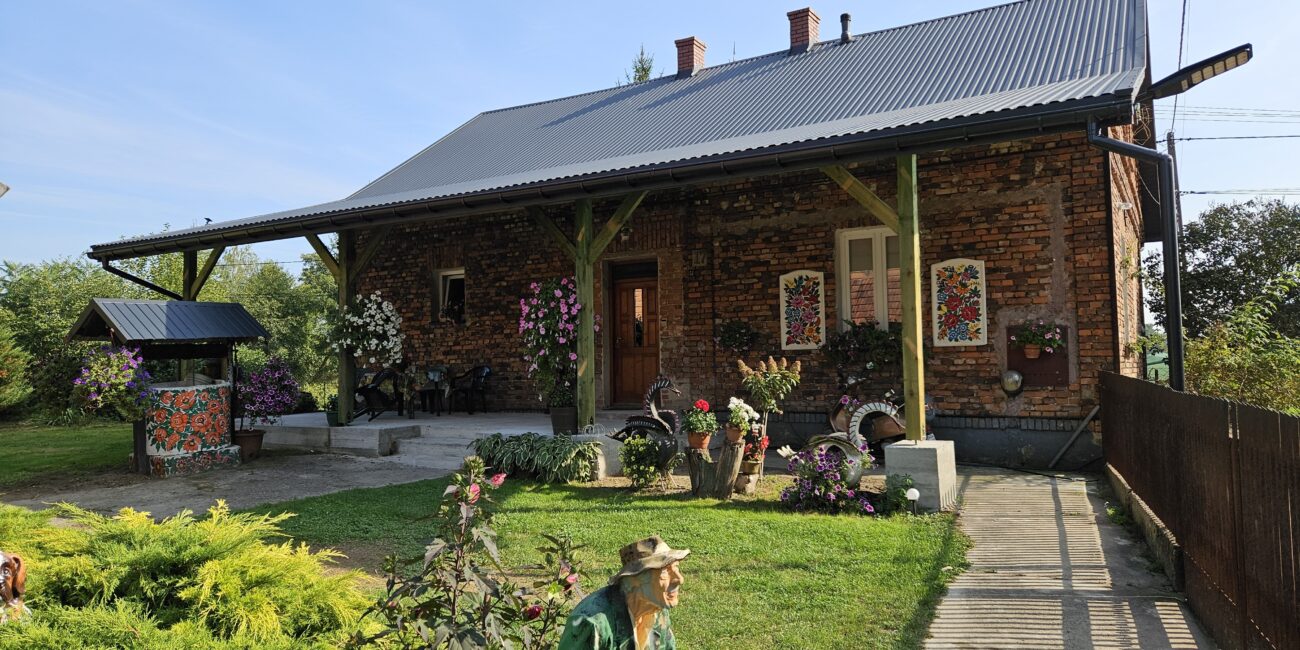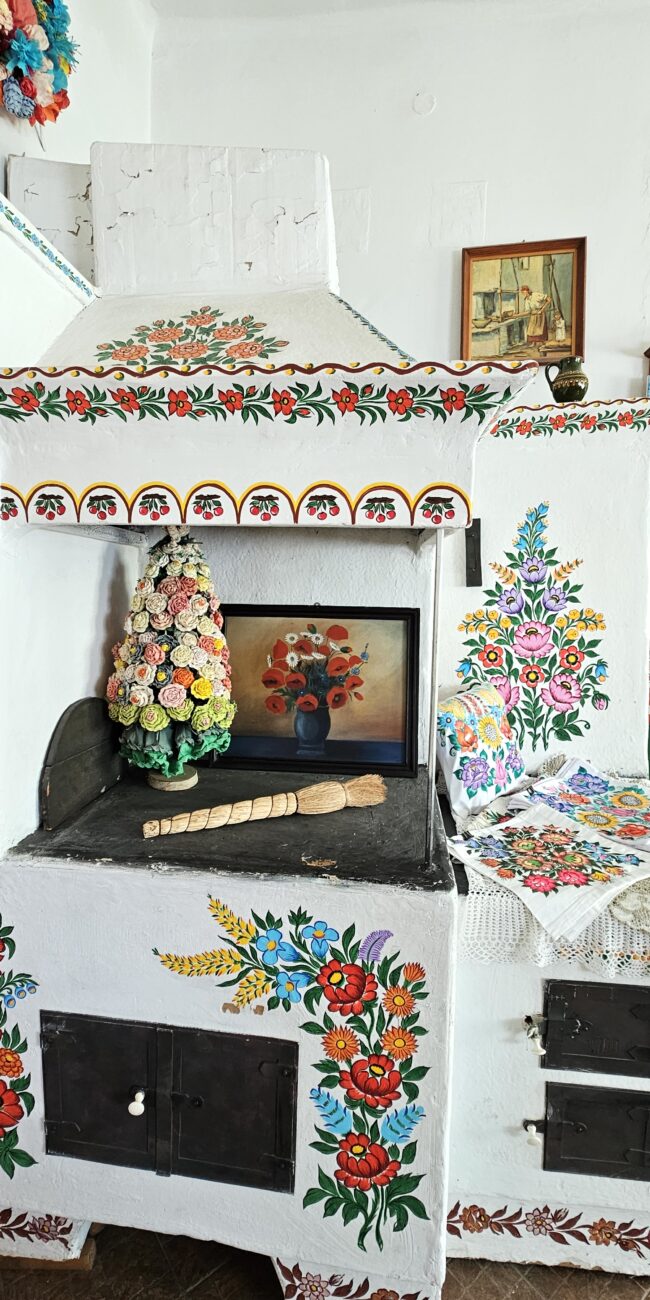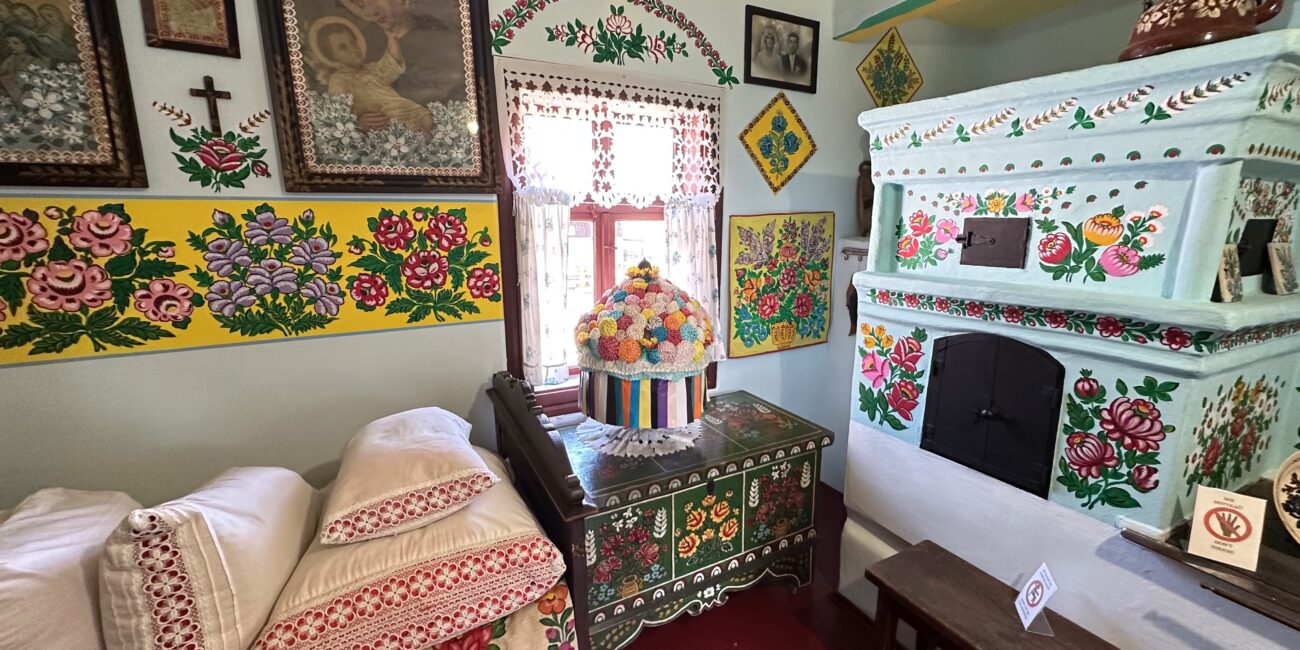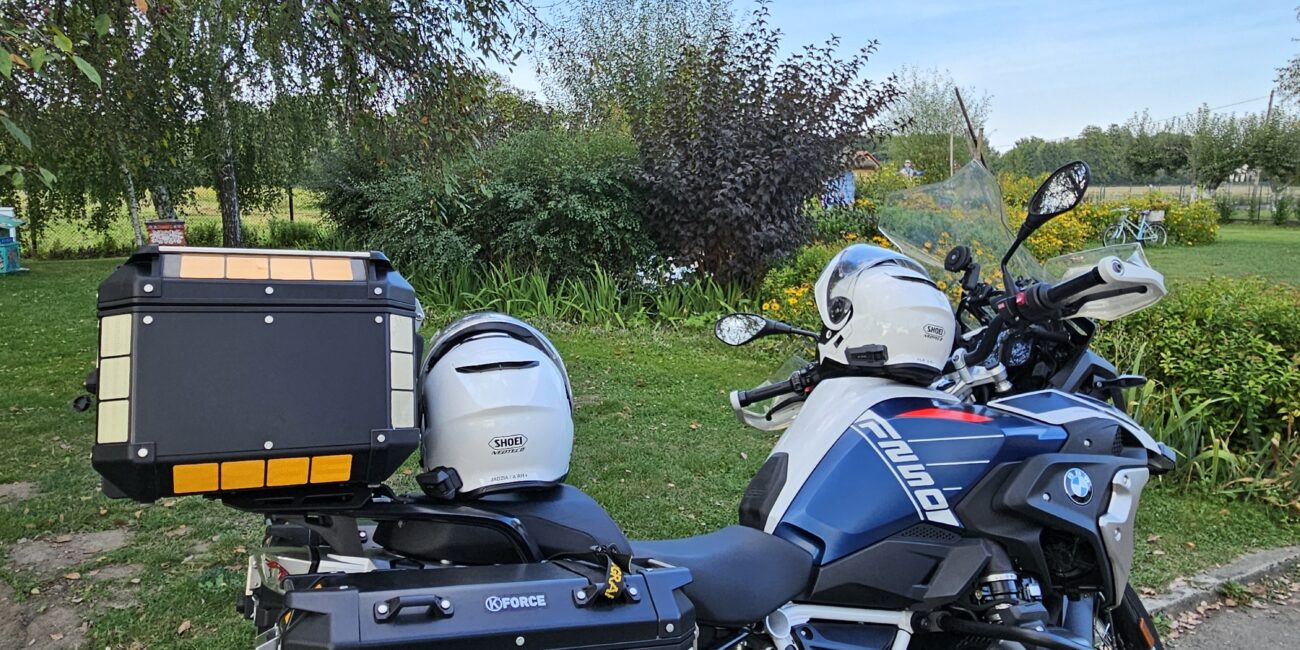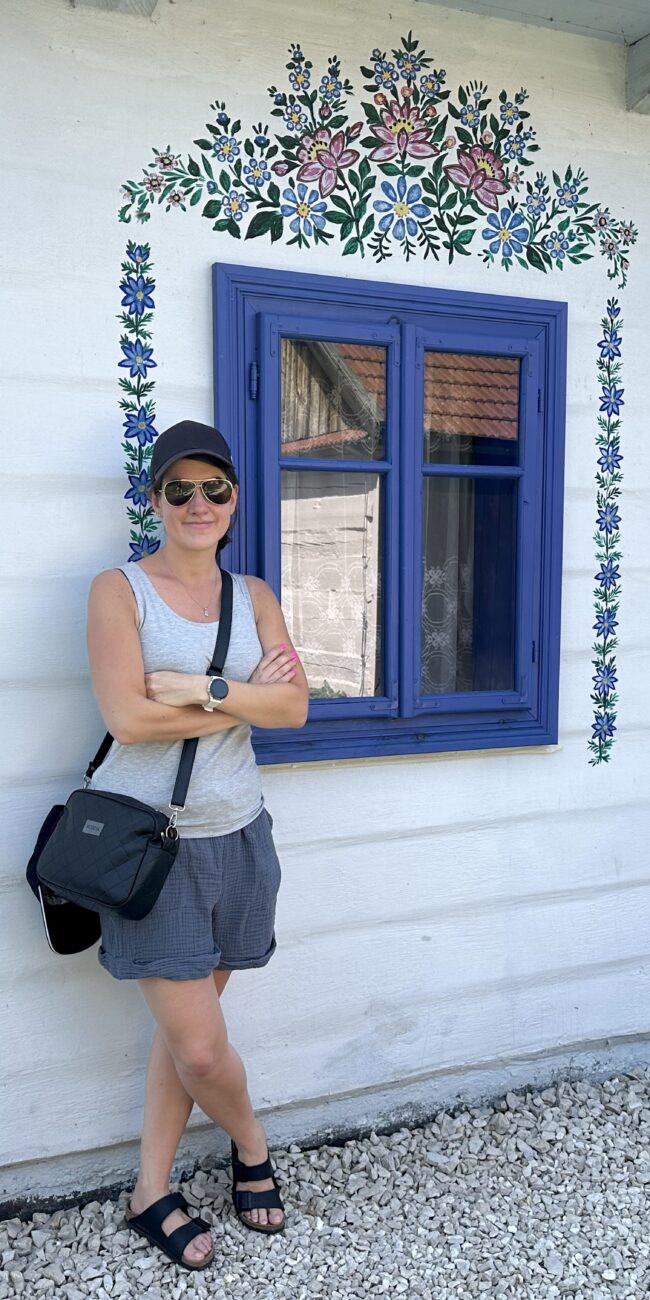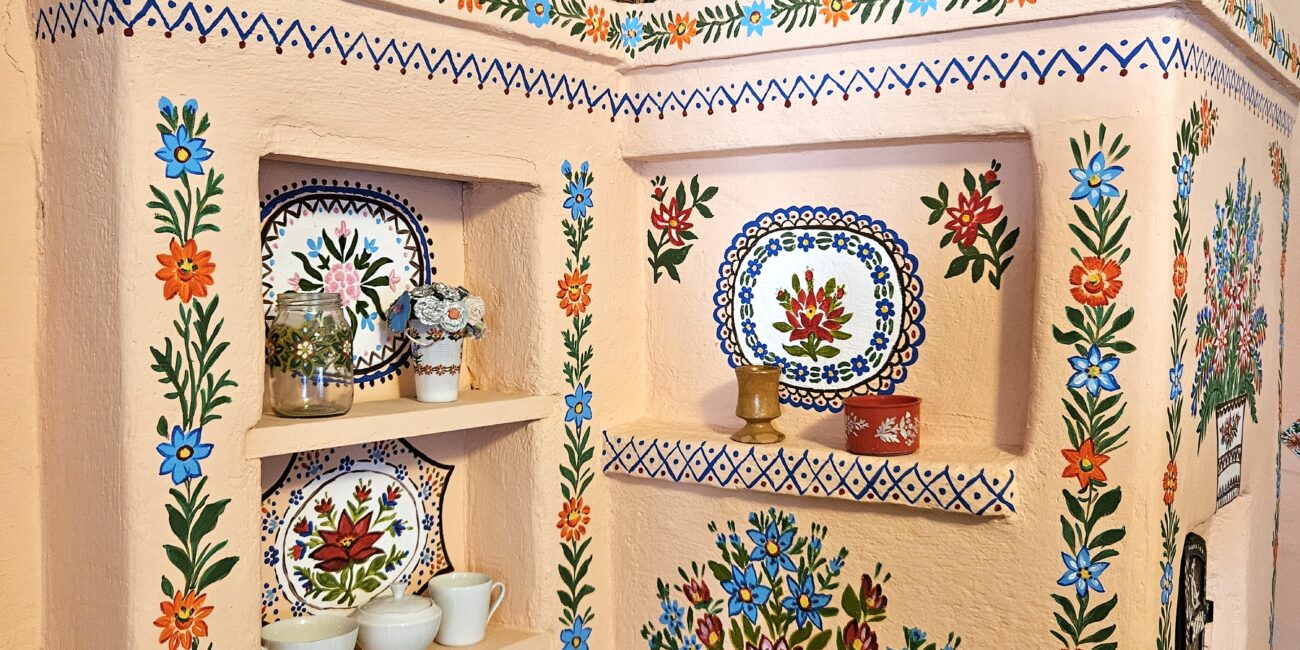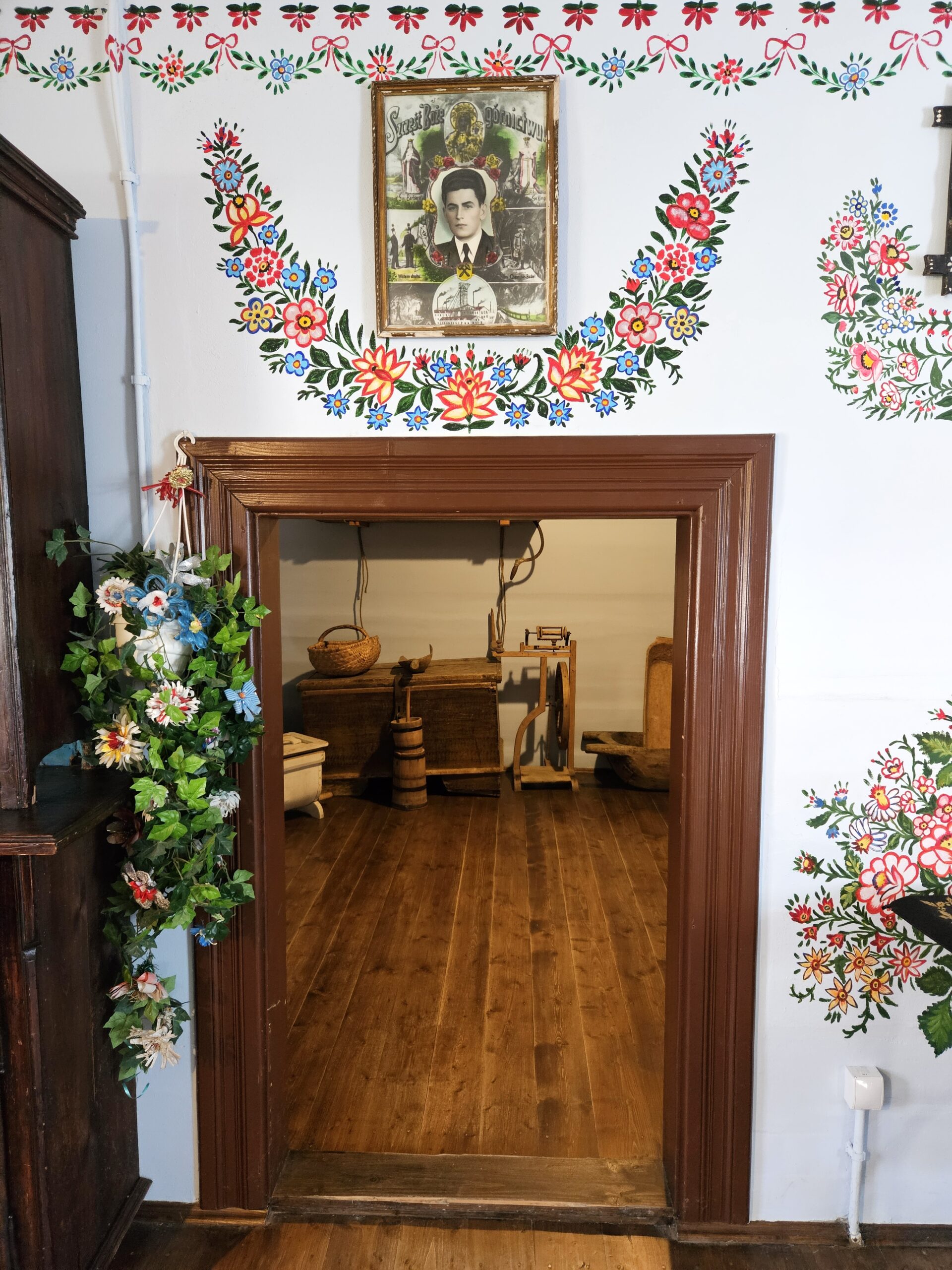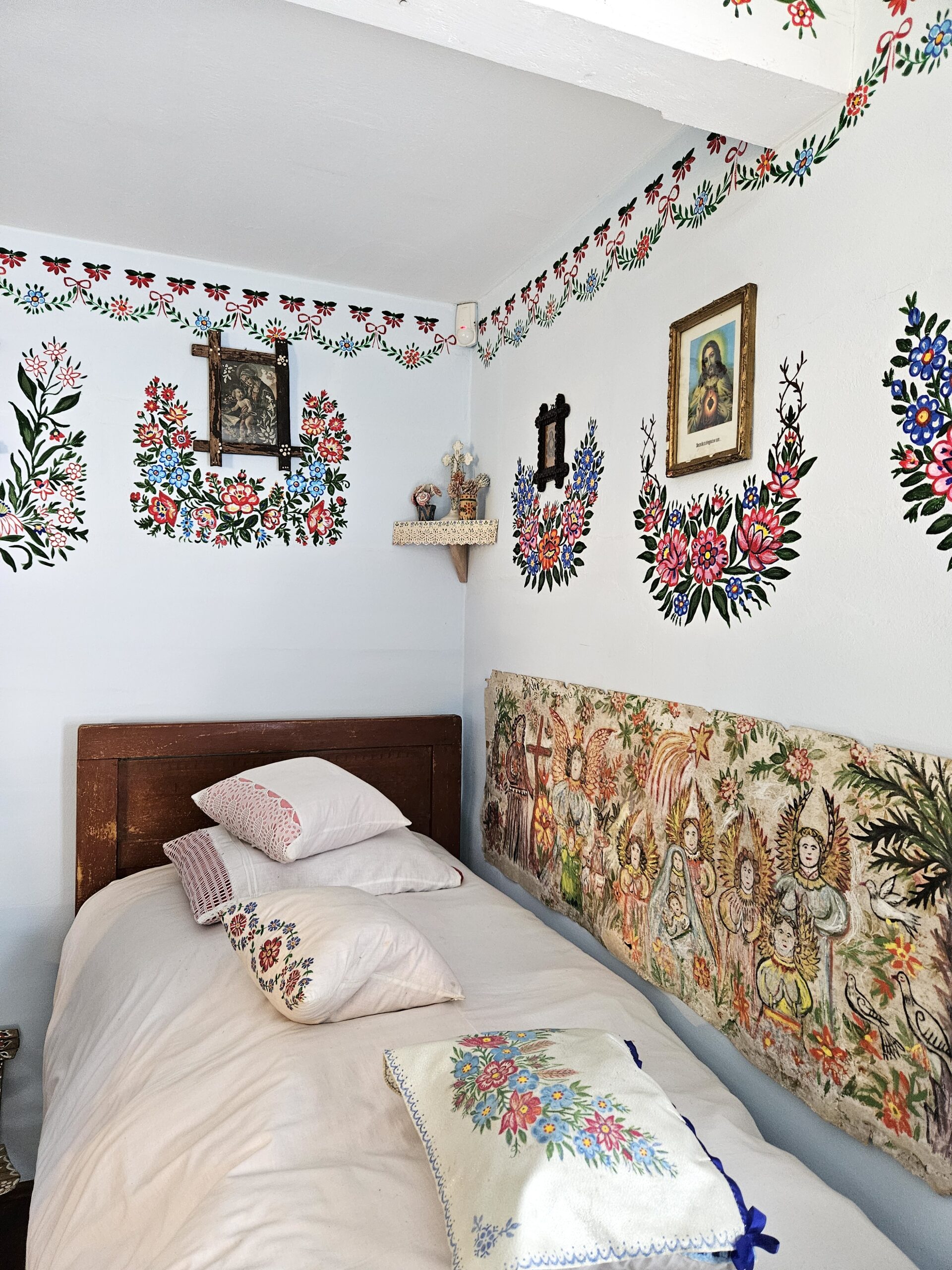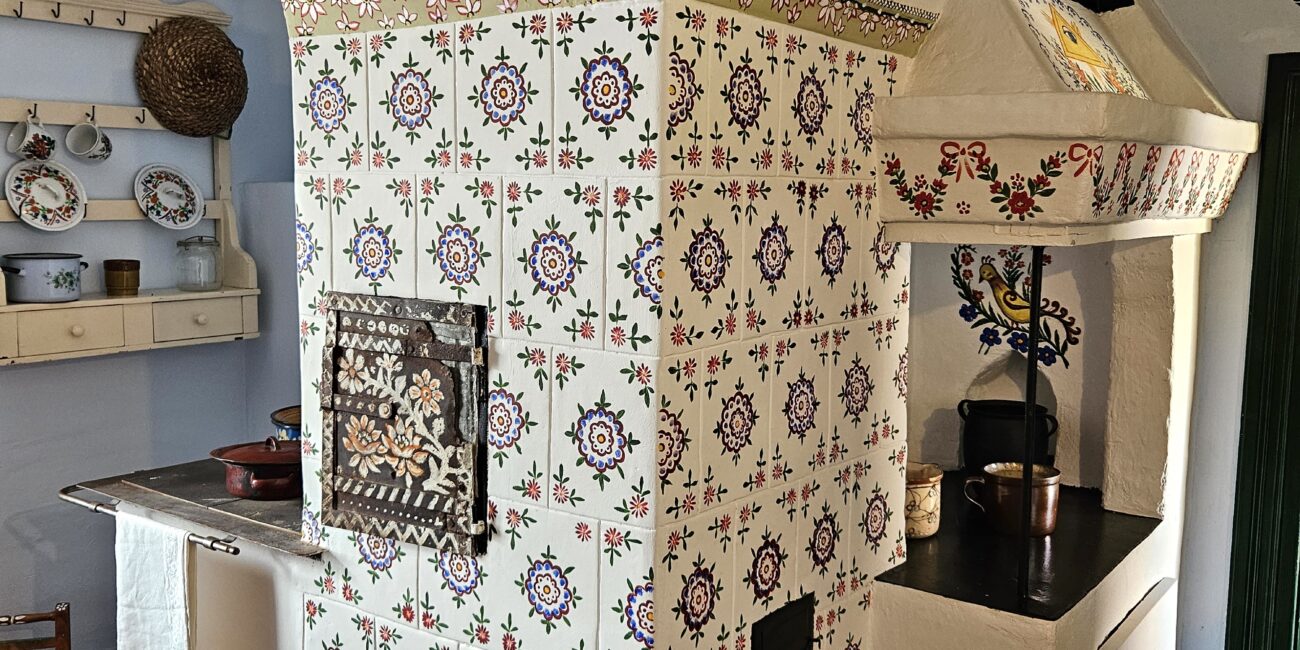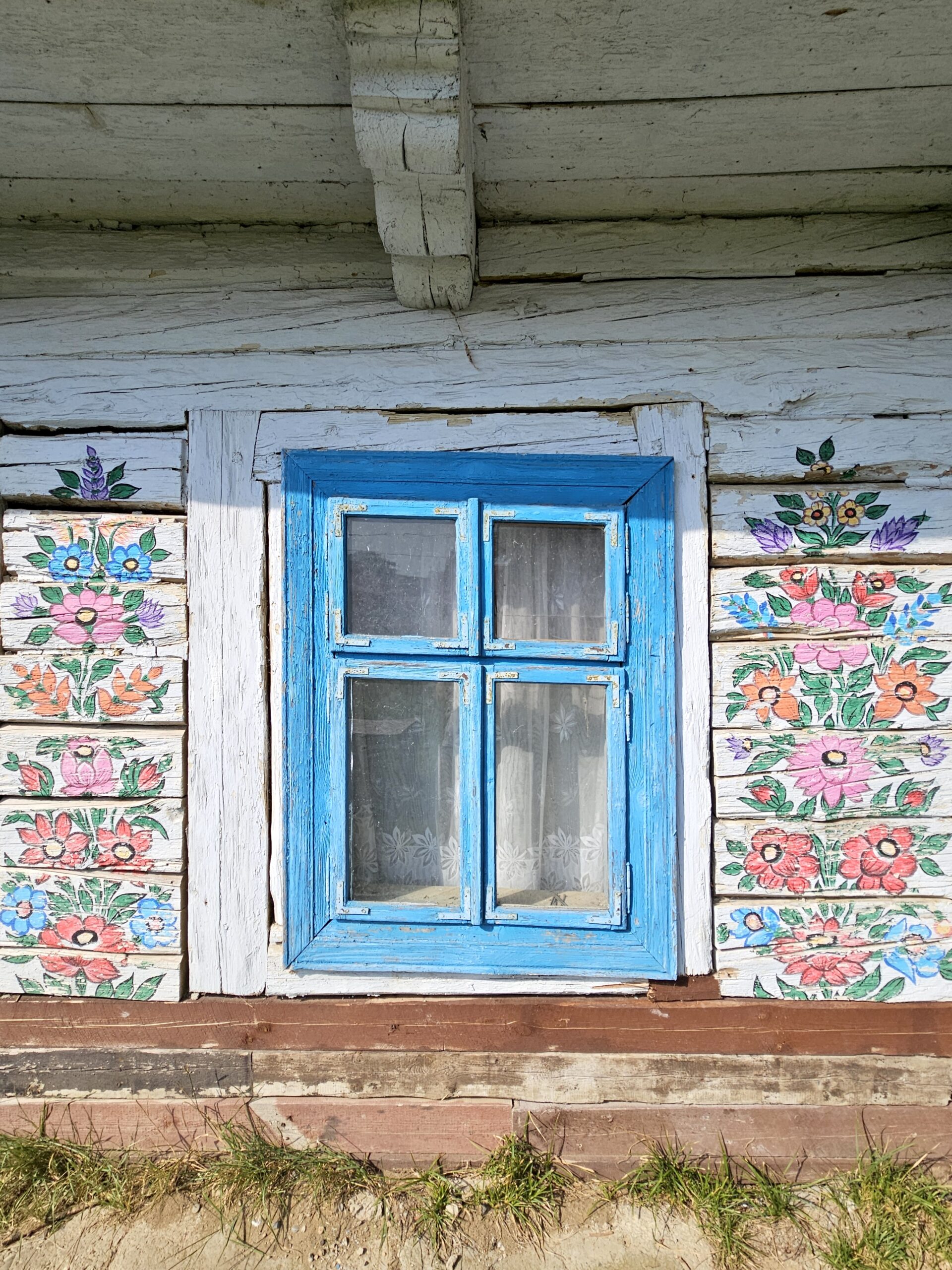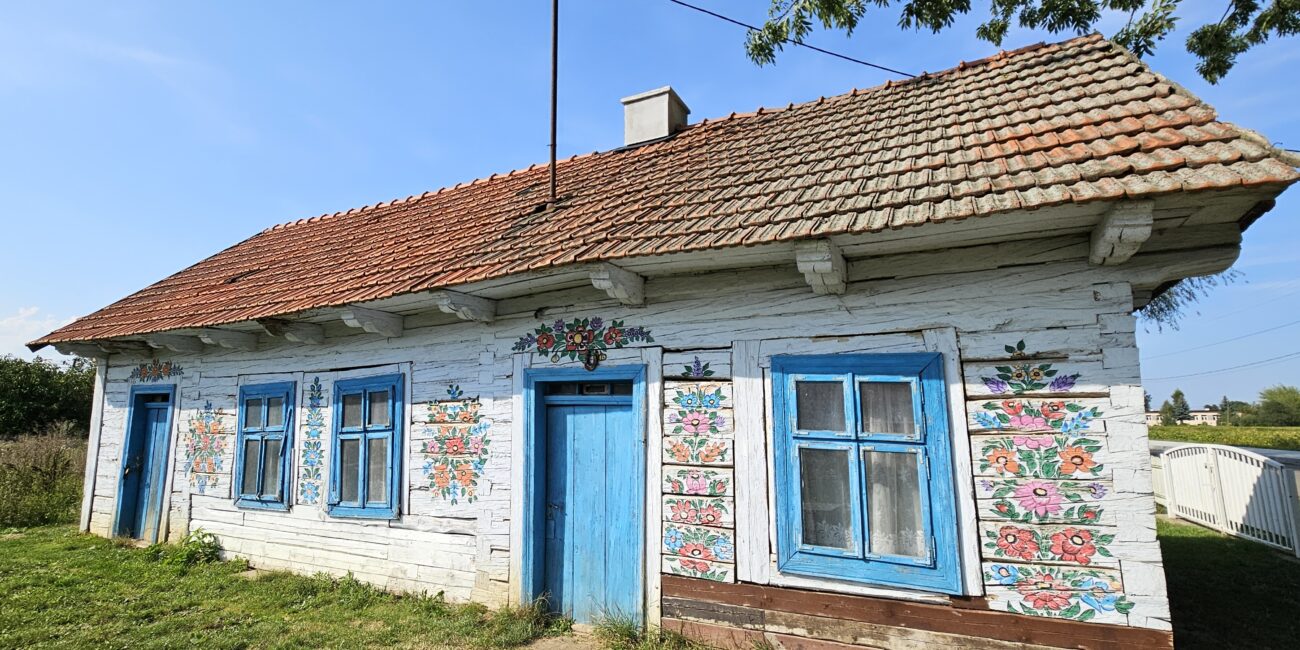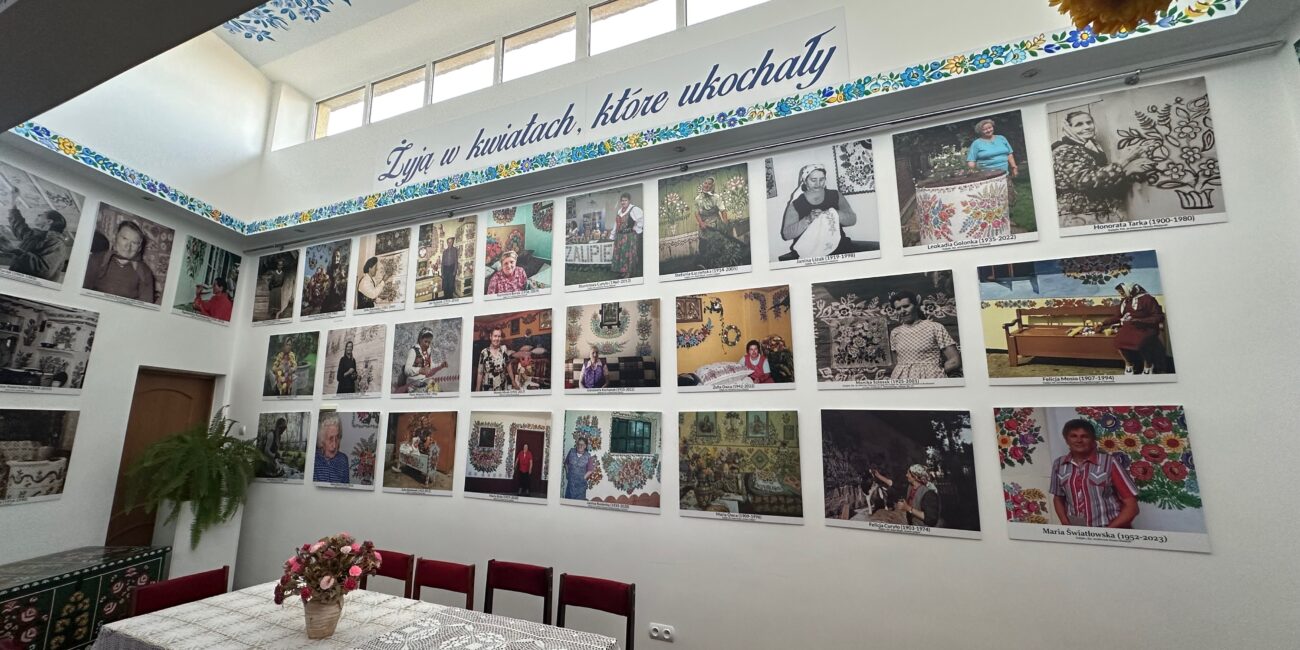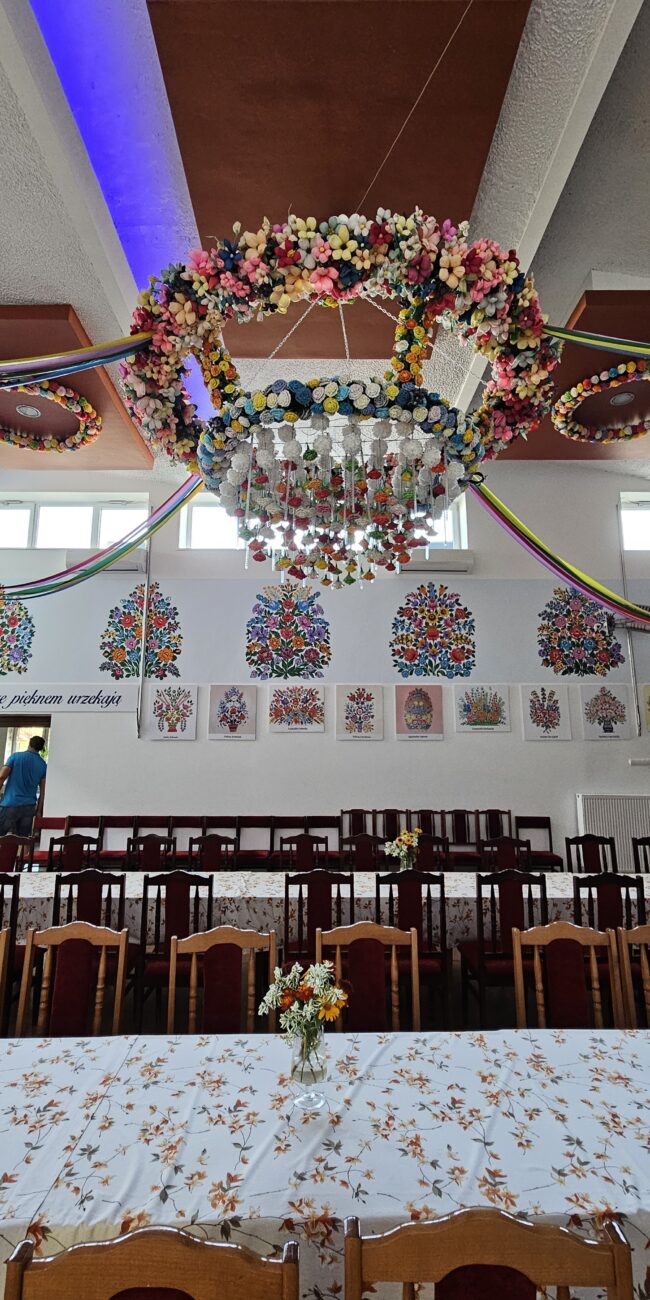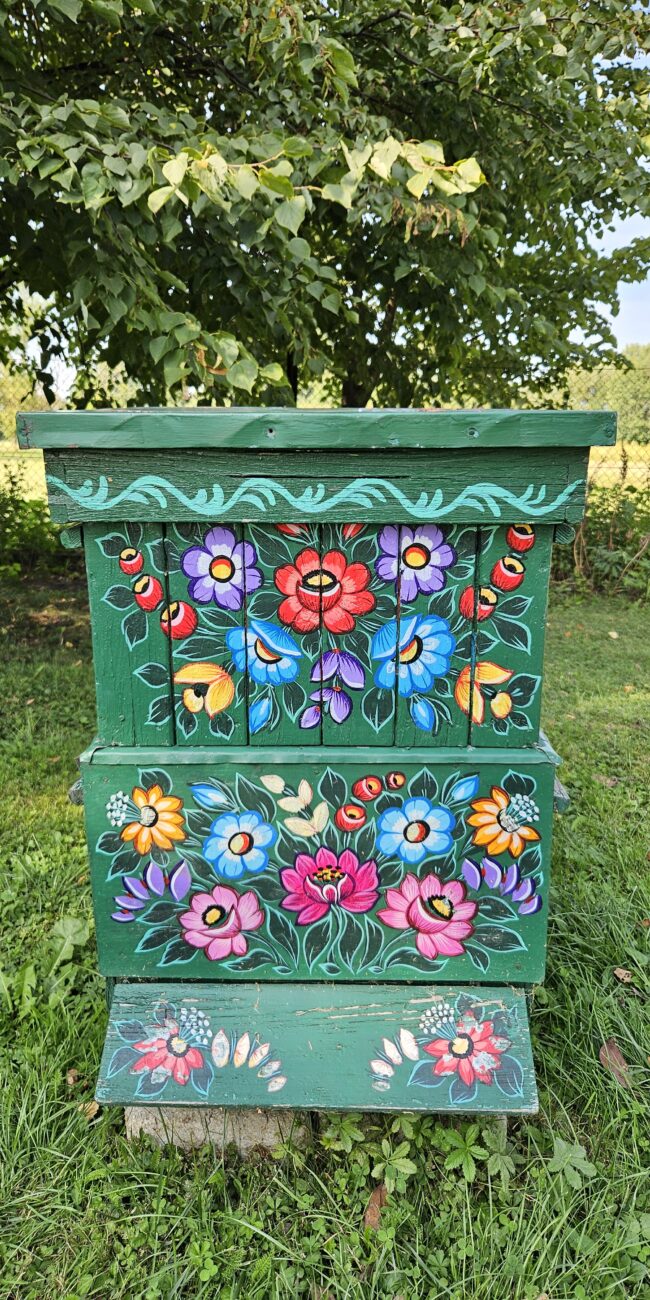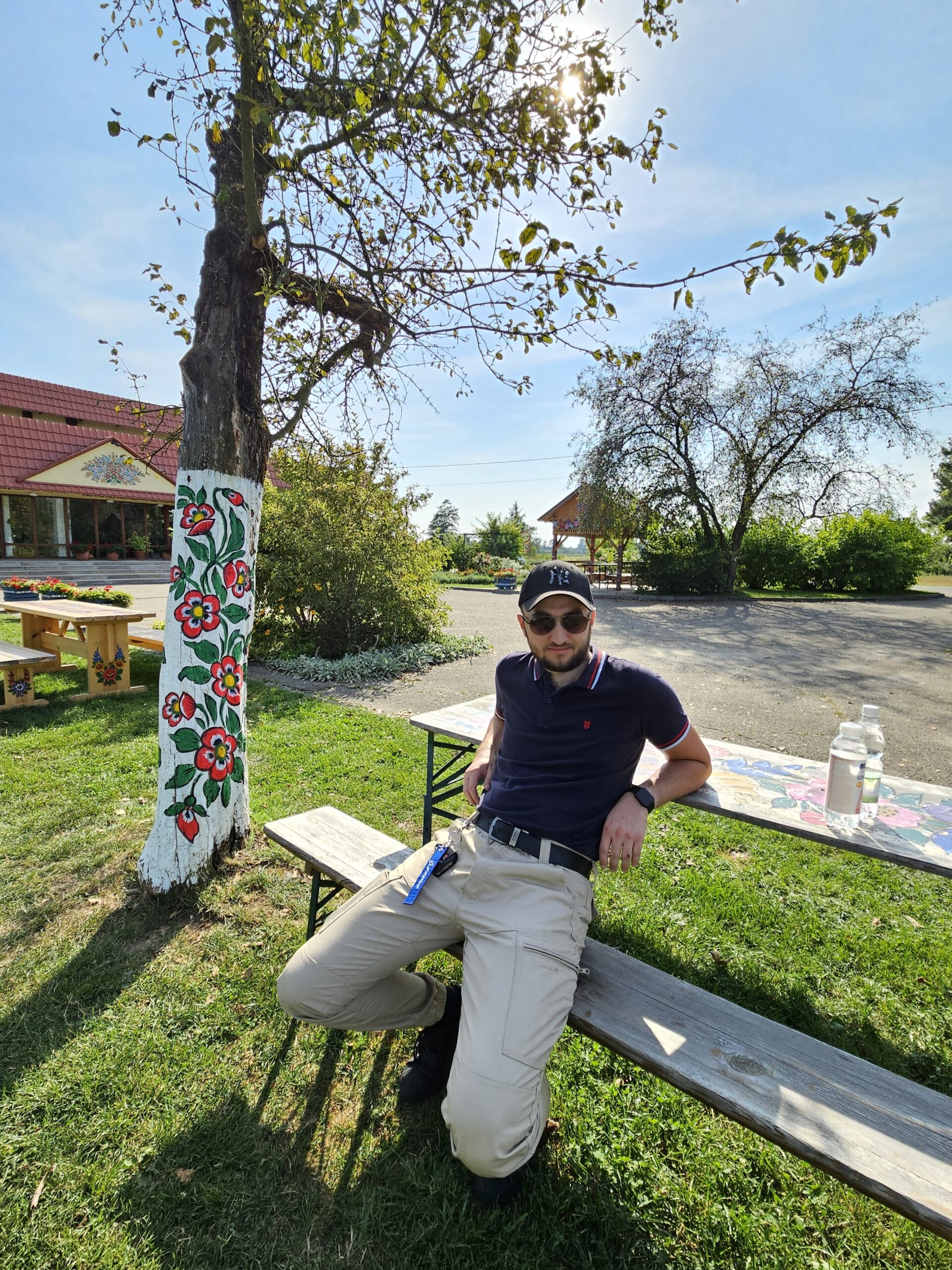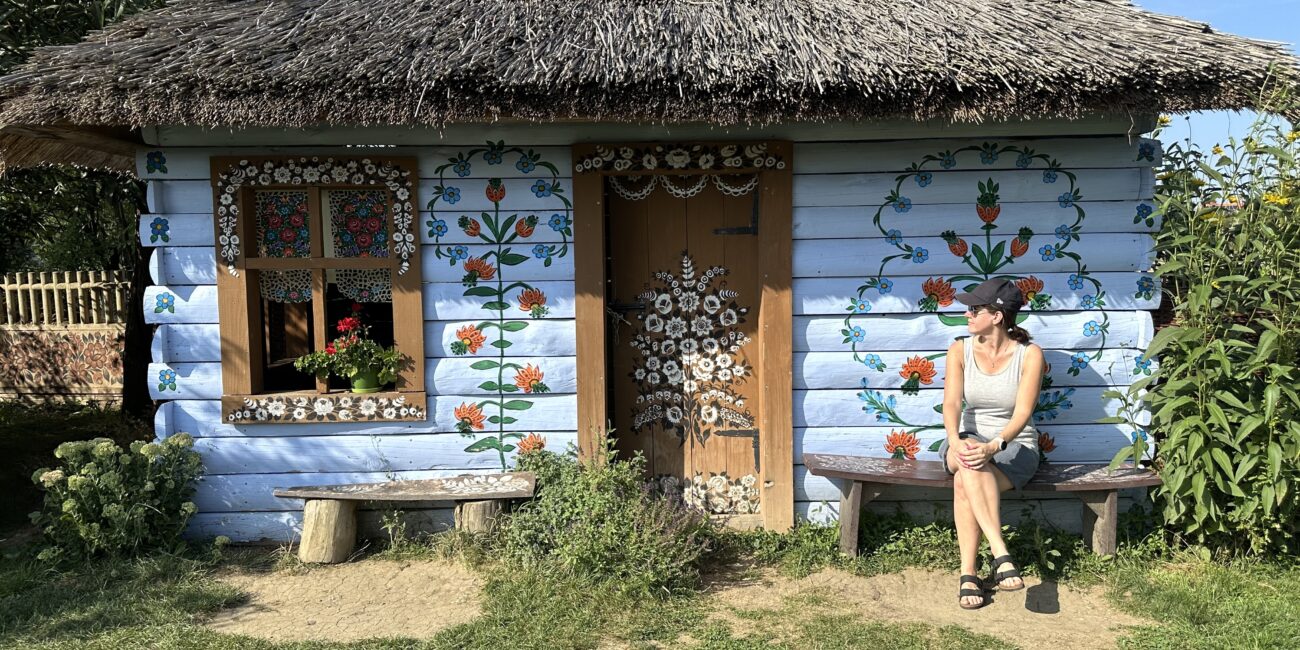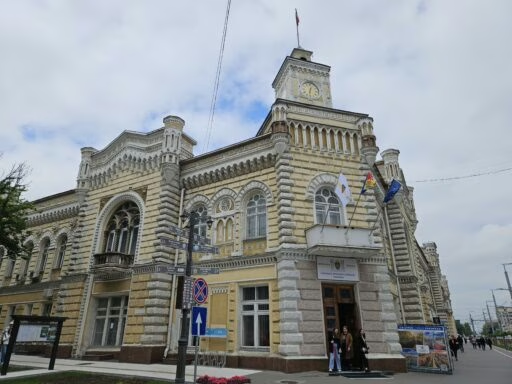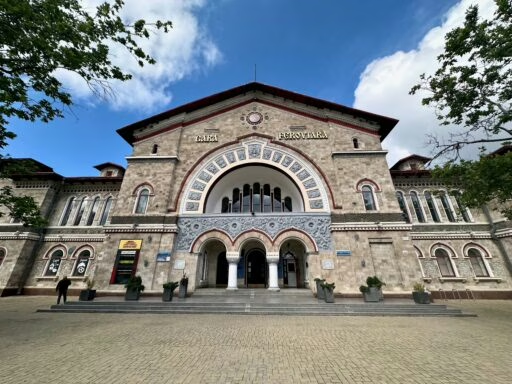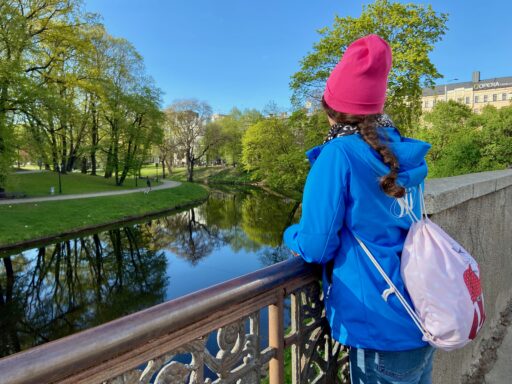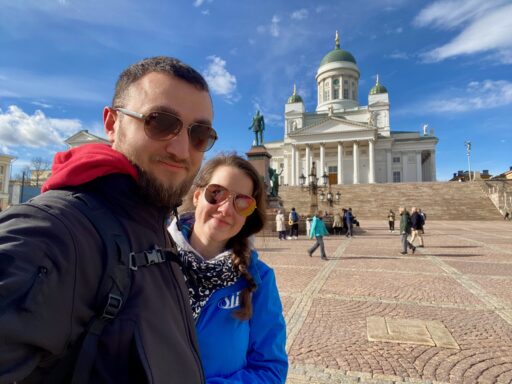This post is also available in:
Polski
Hello! 👋
Usually, on our blog, we focus on travels to foreign destinations, sharing stories of places we explore on our own outside of Poland. However, this time we decided to take a slightly different approach and stay within the country. At first glance, it may seem that Poland no longer holds many secrets for us, but there is one place that stands out with its unique character. Zalipie – a village famous for its painted houses – is a special spot that will surprise any traveler with its colorful history. Join us on a short journey through this vibrant destination!
Where is Zalipie located?
Zalipie is a small village in Lesser Poland, located about 30 km northeast of Tarnów and 100 km from Kraków. Moreover, it lies in a picturesque area that may seem unremarkable at first glance. However, it is here, in the heart of rural Poland, that we discover colorful, hand-painted houses. These unique structures attract tourists from various parts of Poland and the world.
Brief history
Zalipie, a small village in Lesser Poland, gained fame for its unique tradition of painting houses with colorful, floral patterns. This custom began in the late 19th century when women in Zalipie started decorating their home walls with white paint to cover soot stains, caused by the lack of chimneys in homes at the time. Over time, these paintings became more intricate, and the women began adding colors, further developing their artistic skills. This gave rise to beautiful floral motifs inspired by the surrounding nature, which quickly became the village’s hallmark.
In the 1930s, the tradition of painting houses became so popular that in 1948 the first “Painted Cottage” competition was organized. Every year, it awards the most beautifully decorated houses. Thanks to this tradition, Zalipie has become a symbol of Polish folk art.
What did we drive to Zalipie?
We traveled to Zalipie on our BMW R1250GS motorcycle, straight from Warsaw. The journey went quickly and without major issues. Although we had around 300 kilometers to cover, the comfort of the motorcycle and the picturesque landscapes of Lesser Poland made the trip almost effortless. The final stretch, through smaller villages, added to the pleasure of the ride, allowing us to enjoy the scenic views and peaceful, rural atmosphere.
How to get to Zalipie?
Zalipie can be reached in several ways, depending on whether you prefer to travel by car, public transportation or organized tours.
By Car / Motorcycle
The most convenient way to reach Zalipie is by car. The drive from Warsaw takes about 3.5 hours, while from Kraków, it’s around 1.5 hours (100 km). The fastest route from Kraków is via the A4 motorway and the DK73 road towards Tarnów. Zalipie is located in the peaceful, rural region of Lesser Poland, so the final part of the journey leads through picturesque villages.
By train and bus
If you don’t have access to a car, you can reach Zalipie by public transport. First, you need to get to Tarnów, which can be done by train from Kraków or other major cities. From Tarnów, you can catch a bus that will take you directly to Zalipie.
Organized tours
If you prefer stress-free travel, you can opt for an organized tour. Providers like GetYourGuide offer trips that include transport and a guide, making it a convenient option for those who want to learn more about the history of the place without the need for self-planning.
What can we see here?
Zalipie is a place where every corner hides colorful works of folk art. While the entire village is adorned with beautiful paintings, there are a few spots that are especially worth visiting.
Felicia Curylowa’s homestead
One of the key attractions in Zalipie is Felicja Curyłowa’s Homestead. It is the home of the famous painter who played a crucial role in developing the tradition of house painting in Zalipie. Furthermore, her farmstead, now transformed into a museum, is filled with vibrant, hand-painted designs. These motifs decorate not only the walls but also the furniture, utensils, and various household items. It’s a place where you can see what life was like in a traditional village and how art was intertwined with the everyday lives of its inhabitants.
Colorful house
On the day of our visit, we didn’t encounter any of the property’s owners, but we were able to enter the grounds and take photos of the beautifully decorated house. Its colorful, floral patterns on the walls are a perfect example of the folk art for which Zalipie is famous. Although the house was closed, it still felt alive, thanks to its vibrant colors and intricate details.
Women Painters’ House
Dom Malarek (Women Painters’ House) is one of the most important places in Zalipie, showcasing both traditional folk art and contemporary artists who continue the village’s unique painting heritage. This cultural center features works by local female painters who have adorned houses with characteristic floral motifs for generations. Visitors can admire both older and newer pieces of art, and even take part in workshops where they can try painting in the local style. It’s a perfect place to buy a souvenir and delve into the history of the region.
A walk through Zalipie
During our visit to Zalipie, we decided to leave the motorcycle behind and take a relaxing walk around the village. The road through the village was perfect for a 5-kilometer stroll, allowing us to admire not only the painted houses but also the everyday life of the locals. As we walked among the homes, we felt the unique atmosphere of the place – the quiet, peaceful surroundings, and the art seamlessly woven into ordinary buildings.
Such a walk is the perfect way to fully appreciate the charm of Zalipie and its vibrant, colorful heritage. If you’re planning to visit this picturesque village, we highly recommend leaving your vehicle behind for a while and exploring on foot to experience the place up close.

